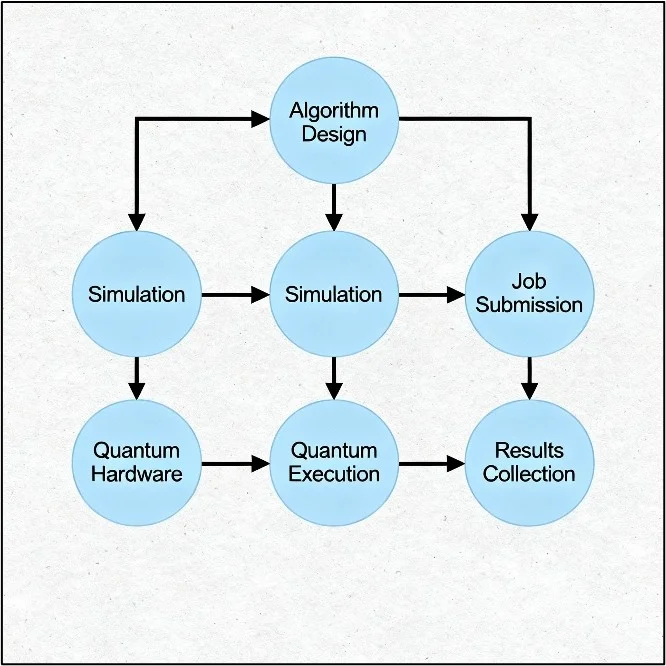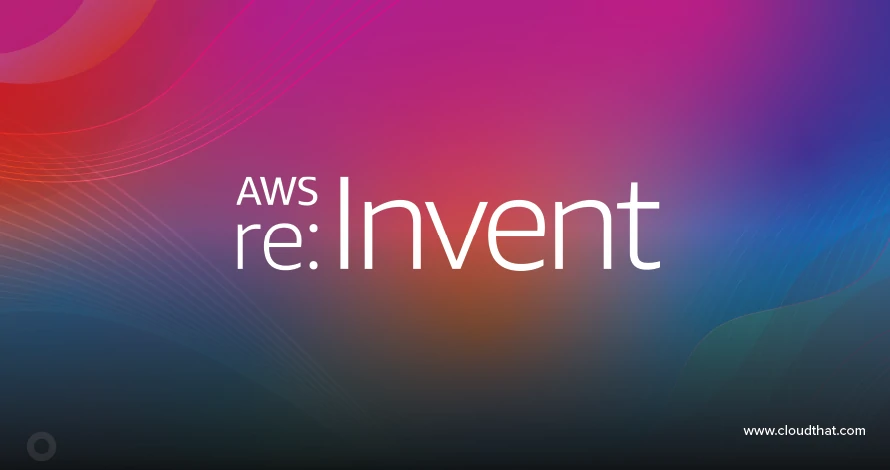|
Voiced by Amazon Polly |
Overview
Quantum algorithms harness superposition, entanglement, and interference to achieve computational feats otherwise impossible on classical machines. Amazon Braket stands out for its flexible programming interface, multi-device support, and ability to run both pure quantum and quantum-classical hybrid algorithms, all within a Python-based development ecosystem that includes Jupyter notebooks and the Amazon Braket SDK.
Pioneers in Cloud Consulting & Migration Services
- Reduced infrastructural costs
- Accelerated application deployment
Key Components of Algorithm Design
- Circuit Construction: With the Amazon Braket Circuit API, users can design quantum circuits by choosing gate operations (like X, CNOT, or Hadamard), controlling qubit interactions, and defining measurement flows.
- Parameter Sweeps: Many algorithms, especially those for optimization, require tuning of parameters. Amazon Braket supports automated sweeps to find optimum values, making experimentation more efficient.
- Hybrid Logic: Near-term quantum hardware excels when hybridized with classical processes. Amazon Braket supports these workflows, allowing users to write Python control loops that invoke quantum subroutines and update parameters in real-time.
Supported Quantum Algorithms on Amazon Braket
Amazon Braket enables implementation and experimentation with several landmark algorithms. Among the most popular are:
- Grover’s Search: Leverages superposition to search unstructured datasets far more quickly than classical approaches.
- Quantum Approximate Optimization Algorithm (QAOA): A variational hybrid method for tackling combinatorial optimization problems, such as MaxCut and traveling salesman variants.
- Variational Quantum Eigensolver (VQE): Used to estimate the ground state energies of molecules, a critical advance in chemistry and materials science.
- Shor’s Algorithm: Demonstrates quantum advantage in integer factorization, though it is currently run mostly on simulators for teaching and demonstration.
Visualizing the Amazon Braket Workflow
Below is a conceptual flowchart illustrating how quantum algorithm development and execution unfold within the Braket environment:

End-to-End Algorithm Workflow: From Notebook to Hardware
Let’s break down the journey for a typical quantum job on Amazon Braket:
- Design Your Algorithm
Users start in a Jupyter notebook or local Python environment, importing Braket’s modules and defining quantum circuits, specifying qubits, gate sequences, measurements, and any classical logic. Example:
python
|
1 2 3 |
from braket.circuits import Circuit circuit = Circuit().h(0).cnot(0, 1).measure(0, 0) |
- Simulate Before Deploying
Simulation is crucial for debugging and prototyping. Amazon Braket supports local simulation and large-scale cloud simulators (SV1, DM1, TN1), allowing users to validate circuits efficiently before incurring costs with quantum hardware. - Submit Job via Amazon Braket API
Upon successful simulation, the job is submitted to real quantum processing units (QPUs) or simulators with simple API calls. Amazon Braket abstracts away hardware-specific details, enabling device-agnostic workflows. - Execution and Parameter Tuning
For hybrid algorithms, classical code iteratively updates parameters and controls quantum subroutines. Amazon Braket’s hybrid job infrastructure enables lightning-fast iterations, interfacing with Amazon EC2 or AWS Lambda for scalability. - Collect Results for Analysis
Outputs such as measurement counts and intermediate results flow directly to user-defined Amazon S3 buckets. This makes integration with standard data science workflows seamless, allowing users to analyze data in Python (with pandas and NumPy) or visualize it using Amazon QuickSight or similar tools.
In-Depth: Hybrid Quantum-Classical Workflows
Hybrid algorithms are central to present-day quantum advantage. In Amazon Braket, Python scripts run on classical resources, orchestrating quantum algorithms on hardware or simulators, with results fed back for further optimization or circuit updates. VQE and QAOA typify these workflows:
- Classical optimizer suggests updated parameters.
- Quantum processor evaluates the circuit for those parameters.
- Results are returned and iterated upon, often thousands of times.
This interaction leverages the strengths of both paradigms, rapid classical computation and genuine quantum effects.
Workflow Highlights
- Elastic Compute Integration: Pair Amazon EC2 or AWS Lambda resources with quantum circuits for scale and flexibility.
- Batch Processing: Sweep algorithm parameters, run ensembles, and collect statistics for robust analysis.
- Efficiency and Cost Control: Extensively simulate and tune before running final jobs on quantum hardware, optimizing both performance and spend.
Amazon Braket Algorithm Library and Community
The Amazon Braket Algorithm Library (open-source, often found on GitHub) offers prebuilt examples and research-ready templates for a diverse range of quantum algorithms. Users can:
- Start from known solutions and adapt to their use case.
- Extend or combine algorithms for custom research goals.
- Engage with the community for help, troubleshooting, and feedback.
Example: Running QAOA on Amazon Braket
A QAOA workflow might look like:
- Define the Problem: Encode, say, a MaxCut optimization graph problem.
- Create Circuit: Use Amazon Braket’s Circuit API to build and parameterize the quantum circuit.
- Simulate: Run parameter sweeps locally and on SV1, tuning the algorithm iteratively.
- Submit Final Job: Deploy the tuned job to quantum hardware, capturing results for performance comparison or publication.
Conclusion
Amazon Braket empowers users from varied backgrounds to explore quantum algorithms, blending classical and quantum computation in a single cloud-native environment.
Drop a query if you have any questions regarding Amazon Braket and we will get back to you quickly.
Empowering organizations to become ‘data driven’ enterprises with our Cloud experts.
- Reduced infrastructure costs
- Timely data-driven decisions
About CloudThat
CloudThat is an award-winning company and the first in India to offer cloud training and consulting services worldwide. As a Microsoft Solutions Partner, AWS Advanced Tier Training Partner, and Google Cloud Platform Partner, CloudThat has empowered over 850,000 professionals through 600+ cloud certifications winning global recognition for its training excellence including 20 MCT Trainers in Microsoft’s Global Top 100 and an impressive 12 awards in the last 8 years. CloudThat specializes in Cloud Migration, Data Platforms, DevOps, IoT, and cutting-edge technologies like Gen AI & AI/ML. It has delivered over 500 consulting projects for 250+ organizations in 30+ countries as it continues to empower professionals and enterprises to thrive in the digital-first world.
FAQs
1. Can I run my own custom algorithms, or am I limited to presets?
ANS: – You can implement fully custom circuits and classical logic or extend existing templates from the open-source Amazon Braket Algorithm Library for more rapid development.
2. How do I analyze quantum job results?
ANS: – All outputs go to Amazon S3, and you can process results with Python (pandas, NumPy), or export data to visualization tools such as Amazon QuickSight for deeper insights.
3. What troubleshooting resources are available?
ANS: – Amazon Braket offers detailed logs, job dashboards, example notebooks, and access to both professional support and a vibrant user community for help with algorithm debugging and optimization.

WRITTEN BY Bineet Singh Kushwah
Bineet Singh Kushwah works as an Associate Architect at CloudThat. His work revolves around data engineering, analytics, and machine learning projects. He is passionate about providing analytical solutions for business problems and deriving insights to enhance productivity. In his quest to learn and work with recent technologies, he spends most of his time exploring upcoming data science trends and cloud platform services, staying up to date with the latest advancements.


 Login
Login


 October 22, 2025
October 22, 2025 PREV
PREV










Comments